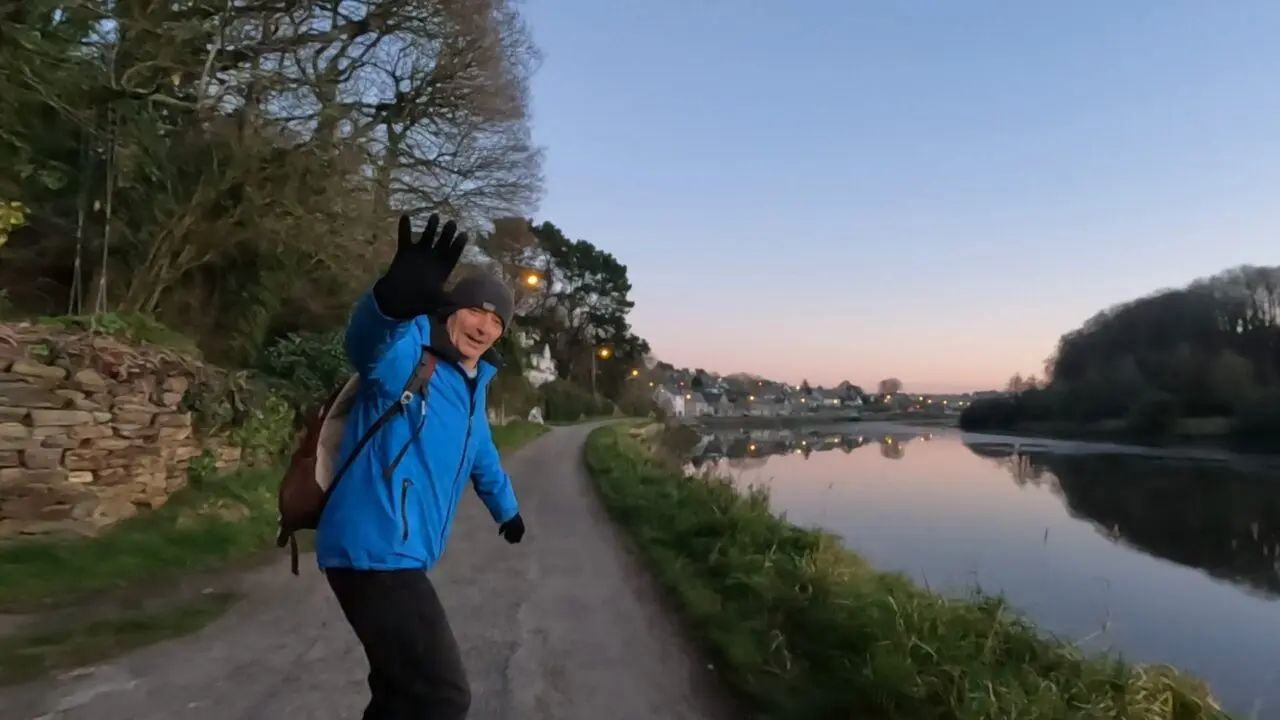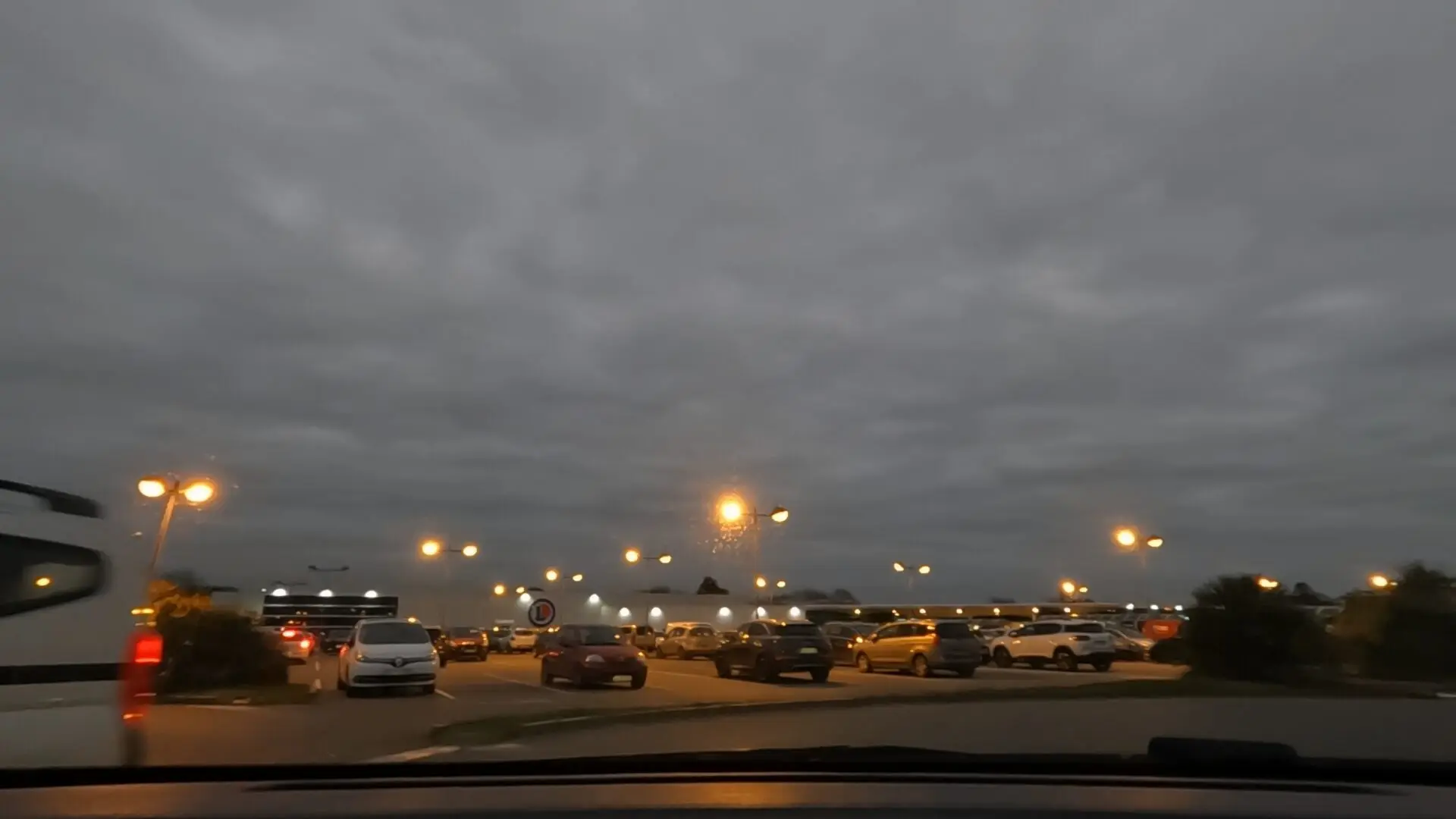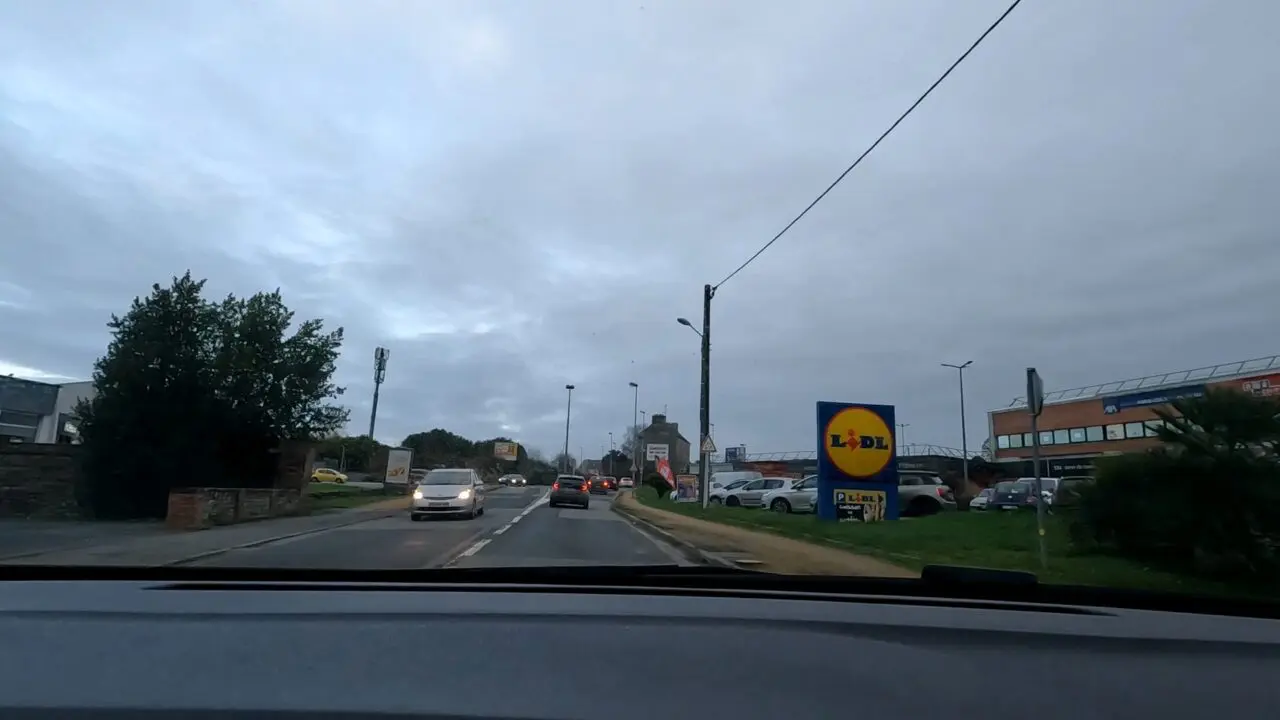Lannion is a small city nestled in the Brittany (Bretagne) region of northwestern France. It’s not a tourist destination—not even close. I’d bet hardly any Koreans have even heard the name Lannion. So why am I suddenly writing about this seemingly random place? Because I lived here for about half a year. During that entire time, I encountered exactly two Koreans. One was my girlfriend, who worked here, and the other was a Korean who had heard rumors that there was another Korean working in Lannion and reached out to my girlfriend. That’s how rare we were in this corner of France—making this place all the more special to me, which is why I’m putting it down in words.
You might have heard of Brittany (Bretagne). Think of it like Korea’s Gangwon-do, Gyeongsang-do, or Jeolla-do—it’s a regional identity that encompasses all of northwestern France. Even looking at Brittany as a whole, Korean tourists are few and far between. It’s like how you don’t see many foreign tourists exploring Korea’s countryside provinces. Anyway, that’s the kind of place this is.
There’s a certain charm to it, though. It feels completely different from Korean rural areas. Let me cut to the chase and show you what I mean.
1. Lannion's Winter Cityscape
Living somewhere is quite different from traveling through it. That’s why, despite spending nearly half a year there, I don’t have tons of photos and videos. It’s like how we don’t usually film around our own neighborhoods.
But every now and then, when something special was happening, I’d grab my camera to capture the moment. Thanks to that impulse, I have a few precious videos that vividly capture the essence of this place.
On the day the Christmas market opened in this small town, I headed downtown with my GoPro mounted on a gimbal. It was about a 20-minute walk, though we usually drove everywhere. My girlfriend’s commuter car—a tiny Toyota Aygo—became our lifeline, our heart, accompanying us on most of the adventures that would later become content for this blog. I should probably write a separate post about that car (something like “Buying & Selling a Car in France: Tips for Getting Your Money’s Worth!”).
This is what the city center looks like. It’s not usually this lively, but since it was Christmas market season, it seemed like the entire town had come out. You can see a child running ahead of us. Having traveled through several small European towns, I’m always struck by how easy it is to spot children here—a sight that’s become increasingly rare in Korea’s countryside.
In this short clip, you can spot one of Lannion’s—and more broadly, Brittany’s—defining characteristics: stone houses. Brittany is rich in granite, so they build their homes with it. There’s the typical gray granite, but also pink granite that you’d be hard-pressed to find in Korea. Houses built with these stones are thick and sturdy, perfect for blocking out the humid maritime climate. The weather here makes even England look predictable—blazing sunshine followed by hail, then scorching sun again, then torrential rain. That’s why most roofs are covered with slate, which stands up well to water.
We kept walking through the gloomy weather and buildings.
At the end of our walk, we reached Place du Centre—the central square and the heart of Lannion. Cafés and shops line both sides of the square, while the center usually serves as a road and parking area. Today, it hosted the Christmas market.
A Christmas market in Europe—in Lannion—feels like a small festival. It’s definitely not just a simple street market. To put it grandly, it represents tradition, culture, community bonding, and celebration. If we had come after sunset, it would have been even more beautiful with all the decorative lights.
Being the biggest event of the year, it was quite crowded. There were horses, kids waving at my GoPro, makeshift tables—the works. No Christmas market is complete without vin chaud (mulled wine). It’s become so popular that you can find it in Korea too, though sometimes they sell “iced vin chaud” here. Since “chaud” means hot… cold hot wine? What’s up with that?
I actually prefer cidre chaud over vin chaud—hot cider, essentially warm apple wine. It’s sweeter than mulled wine and has a lower alcohol content. While hot cider is more common in English-speaking countries and usually associated with Thanksgiving rather than Christmas market season, I still seek it out at every Christmas market I visit.
They sell all sorts of food, and in bigger cities, they even bring in carnival rides. Since Place du Centre didn’t have enough space, they set up a carousel and a few other rides along the banks of the Léguer River.
I actually only realized this was the main square when I saw them setting up the Christmas market here. Usually, it’s just a road and parking lot.
2. Finding Peace Along the Léguer River
Any decent-sized city has a river running through it, and Lannion is no exception. Le Léguer—the Léguer River. Since this is such a quiet town, the downtown area gets familiar pretty quickly. After going back and forth a few times, you know where everything is. So when I needed to refresh, I’d drive down to the riverbank. There are well-maintained hiking trails, and as you stroll along the peaceful riverbank, local French people occasionally ask where you’re from.
On the day I went out with my GoPro, a hiking couple said hello. “Bonsoir!” It was one of those rare cloudless days in Lannion.
This was just after sunset, during blue hour, when a hint of sunset still remained, painting only the horizon with a reddish glow. Walking along the river at this time feels almost dreamlike. It’s like becoming the butterfly in Zhuangzi’s famous dream—am I the butterfly, or is the butterfly me?
Darkness settled over the grasslands faster than the sky. Colorless silhouettes. The calm river, despite some oil slick floating on the surface, became a mirror. With barely any current, it felt more like a lake than a river. Those beautiful scenery ruined by that oily wastewater—there are inconsiderate people everywhere you go.
Even in the dead of winter, it doesn’t get terribly cold. I thought this was a Mediterranean climate, but it turns out it’s a temperate maritime climate. It rarely drops below freezing in winter, so you basically never see snow. With all the climate chaos these days, Paris has been getting heavy snowfall, so I wonder what this place looks like now. I just searched and apparently there are floods…
When I took that photo, the water level was quite low, but if it overflowed, those beautiful riverside houses might have become ruins…
3. Lannion's Crown: Brélévenez Church
While you can’t really call it a tourist destination, there are still several notable spots. One of them is the église de la Sainte-Trinité de Brélévenez, usually just called Brélévenez Church. It’s the place with atmospheric stone steps and brooding skies. Except for the peak summer season, the weather is generally gloomy, so instead of umbrellas, people wear waterproof outer layers. The climate is similar to England’s.
After climbing what feels like endless stairs, you’re greeted by the church with its impressive pointed spire. It’s quite elegant, though I don’t have photos of the church itself. I wanted to go inside, but when I peeked through the tightly closed doors, it seemed like it wasn’t operating hours. Disappointed, I apparently didn’t take a single photo of the church.
The atmosphere around the church is intriguing—a cemetery surrounds it. It’s distinctively European-style. While Koreans build burial mounds, here they cover flat graves with marble or stone slabs. Around them, they plant grass or flowers, place sculptures, or erect headstones engraved with names and memorial messages. It’s not a spooky atmosphere at all—quite orderly, actually. I walked quietly among them, paying my respects.
I don’t have photos of the church or cemetery, but I do have this shot of Lannion’s downtown. You can see those slate roofs I mentioned earlier. Characteristically uniform in color. No charm, just rationality and functionality. If they had painted them all orange, this could have been France’s Lisbon. This is why urban planning matters.
4. Places I Visited Countless Times While Living in Lannion
During my nearly half-year stay in this small city, there were places I visited countless times. Sometimes every day of the week, at minimum once or twice a week. Actually, it wasn’t just one place—it was several.
When you have nothing to do, supermarket browsing is the best entertainment. You can tell from the sky color that I visited the left two markets on the same day, and the right two on another day.
I think a French supermarket comparison analysis would make interesting content, so I’ll write about that later. For now, just a brief introduction.
In order: E.Leclerc CEDEX, Intermarché SUPER, Grand Frais, and Lidl.
I went to Leclerc and Intermarché so often I could navigate them blindfolded, knowing exactly where everything was located. Leclerc was right in front of my girlfriend’s office, while Intermarché was near our place. Both are massive hypermarkets. With all that land available, they don’t bother building high or putting parking underground. We bought most of our daily necessities and food from these two places and Amazon.
I also frequented Grand Frais. Being a small town, there wasn’t an Asian market at the time. This place came closest, selling various types of rice, Asian vegetables, fruits, and spices. They particularly excelled in high-quality local specialties, so despite being a bit pricier, I usually bought fruits and vegetables here.
Lidl is just a budget market. Quality isn’t great. I rarely went there while living in Lannion—only occasionally when traveling to Paris or other places where no other supermarkets were nearby.
Supermarket browsing is always entertaining.
5. In Closing
Lannion isn’t a famous city, and it’s certainly not a tourist destination. It’s a small town sustained by a few large companies—like Korea’s Ulsan, but much smaller in scale. But calling it countryside might give you the wrong impression if you’re thinking of Korean rural areas. Anyway, it’s a unique place that’s both tranquil and vibrant—something you won’t find anywhere else.
The medieval charm of quiet downtown alleyways, the warm year-end atmosphere of the Christmas market, the modest natural scenery along the Léguer riverbank—everything is vividly etched in my memory.
La Boulangerie Terroir & Tradition with its particularly delicious almond croissants, the breathtakingly expensive McDonald’s, the indoor swimming pool Espace Aqualudique Ti dour with its gentle waves, the kebab shop Ozgûr Kebab that I still think about sometimes—Lannion, a place I’ll probably never visit again before I die, feels a bit nostalgic today…
So would I want to go back and live there again? Well…















